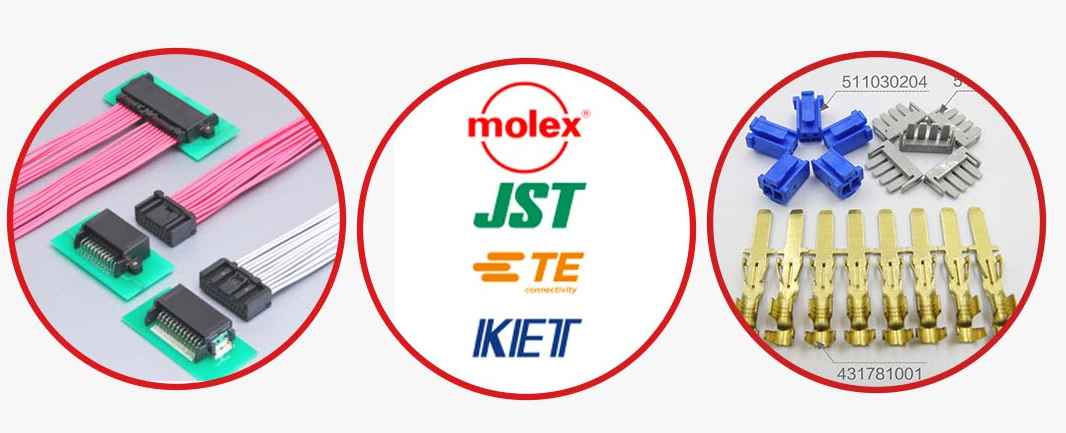Wiring harness connectors come in various sizes, shapes, and materials to ensure optimal performance for different applications. Our cable engineers use different wiring harness types in custom designs daily to achieve the highest standards of continuity, integrity, and safety.
What is a Harness Connector?
Wire harnesses offer protection and organization for cable assemblies. They shield the cables from external forces such as abrasion, extreme temperatures, moisture, and dust, which can degrade components over time. Wire harness connectors are integral to this system, serving as the bridge that ensures a consistent flow of data, signals, or power. They are specifically engineered to withstand the specific environmental conditions of each application.
There are essentially two main types of wire or cable harness connectors—male and female. Male and female wire harness connectors serve to provide the necessary junctions between the many different elements of the wire harness to produce an efficient transmission of data, signal, or power through the system. In simplistic terms, plugs are usually male connectors and jacks are female wire harness connectors.
Connectors come in a variety of sizes, shapes, and dimensions to fit perfectly within the electrical systems they support. From cutting-edge medical devices to complex industrial control systems, the versatile wire harness connector makes these marvels of modern technology possible.

A Closer Look at Wiring Harness Terminals
Terminals are crucial components that serve as the termination points of wires. Depending on the system's needs, terminals may mark the end of a wiring component or connect to a different component. They come in various sizes and shapes, each suited to its specific application.
Here are a few common types of wire harness terminals:
- Rings: These terminals have a rounded end that allows attachment to screws and studs. They come in various sizes and can be insulated and crimped or soldered onto wires.
- Spades: Featuring a unique fork shape, spades have an easily attachable open end ideal for tight spaces.
- Hooks: With an open end, hooks are simple and efficient terminals known for their high durability.
- Quick-connect/Disconnect: These terminals are perfect for industrial control systems and automotive applications where rapid connection and disconnection are necessary.
- Bullets: Ideal for connections between male and female wire harness connectors.
Terminals play a vital role in wire harness connections, providing the necessary junctions for terminating or progressing to other components. Their design is just as important as any other aspect of the custom wire harness, ensuring continuity, integrity, and safety to meet stringent in-house quality assurance standards.
How to Design Wire Harness Connectors
Wire harnesses are highly customized components within electrical systems, serving diverse applications in telecommunications, medical, military, industrial, automotive, and more. Designing these connectors requires a thorough understanding of the application's specifics, budget constraints, and project timelines. Here’s a detailed approach to designing wire harness connectors:
Location, Location, Location
One of the first steps in selecting the perfect wire harness connectors involves considering the location and environmental factors of the intended application. Wire harnesses often operate behind the scenes, hidden within the overall system while providing critical support. These locations can be constrained and subject to various factors such as temperature, abrasion, moisture, and other environmental variables.
For example, military applications demand equipment that functions flawlessly in extreme environments. Cable engineers must understand these environmental variables and assemble components that meet or exceed the project specifications.
Mitigating Against Interference
After determining the location, the next step is to address potential interference. Interference, which degrades the transmission of data, power, or signals, can come in many forms. Effective mitigation techniques, such as using Mylar sheathing to protect against electromagnetic interference (EMI) and radio frequency interference (RFI), help maintain signal integrity.
In high-tech communications equipment, protecting the system from various types of interference is crucial to prevent signal degradation or complete failure.
Precision Measurements Make Better Wire Harnesses
Using the correct connectors and terminals as part of a quality wiring harness design ensures the harness is robust, protected, and appropriately routed. This optimization provides the system with the best conditions to function effectively. Precision in measuring the lengths of wire, gauges, terminals, connections, sheaths, shields, and insulation is essential. This meticulous approach ensures efficient use of materials, helping projects stay on time and on budget.
By considering these factors, designers can create wire harness connectors that meet the demands of their specific applications while maintaining high standards of quality and reliability.
Choosing the Best Wire Harness Connectors and Terminals
Selecting the right wire harness connectors and terminals is crucial for the performance and reliability of your electrical systems. Partnering with a custom cable manufacturer that possesses specialized knowledge and extensive experience in your industry is essential. Our team brings a wealth of expertise and maintains a comprehensive tooling inventory, enabling us to create tailored solutions for even the most intricate systems.
Contact us today to discuss your project's specifications and discover how we can assist you in achieving optimal performance and reliability with our custom wire harness solutions.
